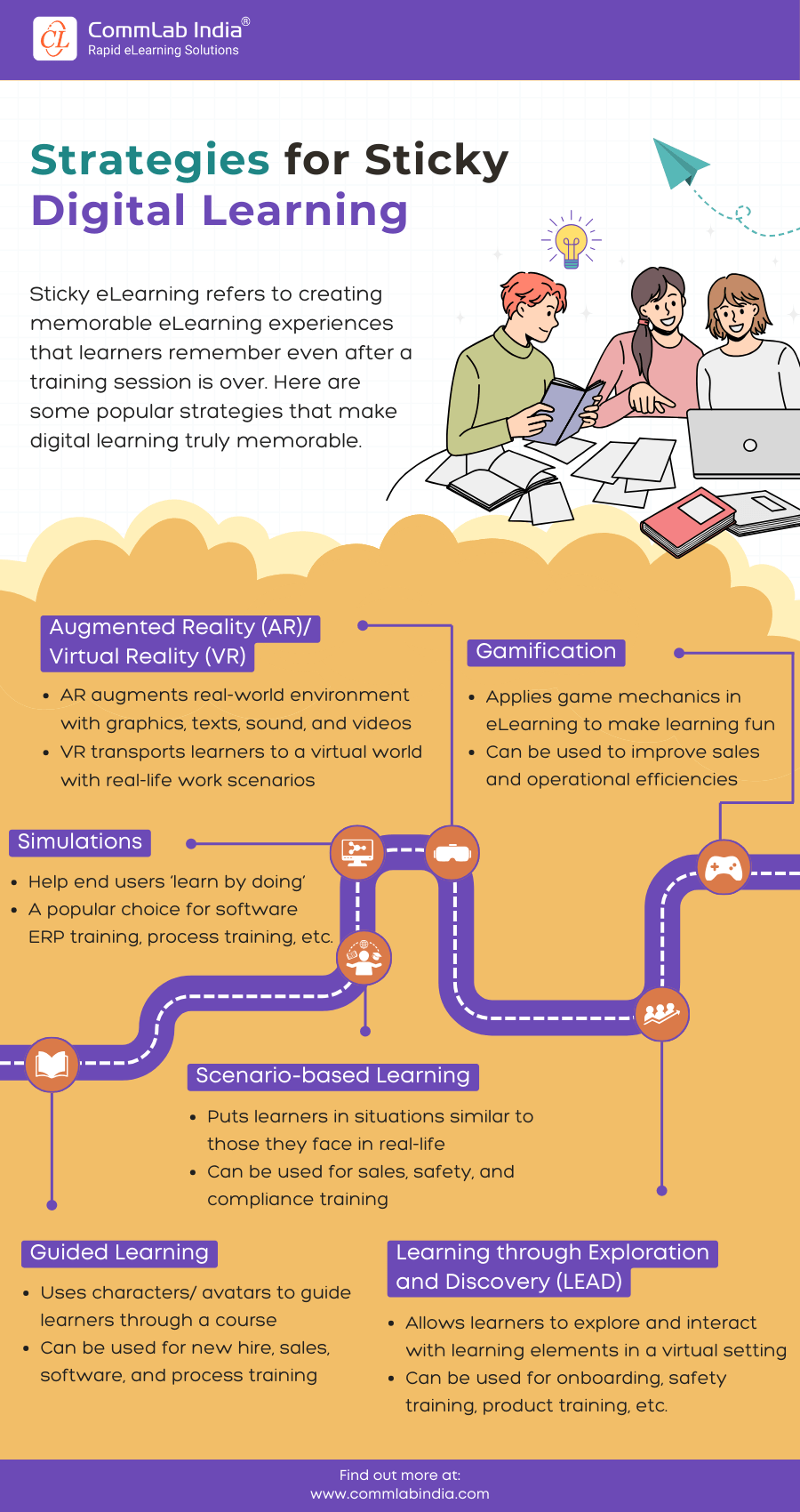Cracking the Code for Sticky Learning in the Digital Era [Infographic]
![Cracking the Code for Sticky Learning in the Digital Era [Infographic] Cracking the Code for Sticky Learning in the Digital Era [Infographic]](https://blog.commlabindia.com/hubfs/blogs/digital-learning-sticky-learning-infographic.jpg)
Sticky learning is a term rooted in the idea of knowledge retention. It signifies the capacity of learners to not only absorb information during a learning experience but also to retain and apply that knowledge effectively over an extended period. The term emphasizes the enduring impact of learning, where the acquired information becomes ingrained in the learner's memory, readily accessible for application in real-world scenarios.
Sticky learning goes beyond short-term memorization, aiming for lasting impact and sustained knowledge application. The goal is to create learning experiences that stick with individuals, enabling them to confidently and proficiently utilize the acquired knowledge over time.
Understanding Sticky Learning with an Example
Imagine a scenario where a sales team undergoes training on new customer relationship management (CRM) software. Instead of traditional classroom sessions, the training incorporates hands-on simulations and interactive scenarios that mimic real-world sales situations. This dynamic approach not only deepens understanding during the training but also ensures that the knowledge "sticks" with the sales team, enabling them to confidently and effectively use the CRM software in their day-to-day activities long after the training concludes. Sticky learning prioritizes engagement, practical application, and ongoing relevance to create lasting and impactful learning experiences.
Ways to Ensure Sticky Learning in Digital Learning
1. Interactive Learning Platforms
Utilize interactive digital platforms that incorporate simulations, gamification, and hands-on exercises. These elements engage learners actively, making the learning experience memorable.
2. Microlearning Modules
Break down content into bite-sized, easily digestible microlearning modules. Deliver information in short bursts, allowing learners to absorb and retain key concepts without overwhelming them.
3. Personalized Learning Paths
Adaptive algorithms, fueled by AI, can intelligently tailor content to suit each learner's unique needs, significantly enhancing learning impact and optimizing the learning experience.
→ Download Now: Sales Training for an Enterprise Software Company [Case Study]
4. Multimedia-rich Content
Capitalize on the diverse range of digital media because varied multimedia formats appeal to different learning preferences.
5. Mobile Learning
Ensure that learning materials are accessible on various devices, particularly mobile devices. This enables learners to engage with content at their convenience, promoting continuous learning beyond traditional settings.
Proven Strategies for Sticky Digital Learning
Concluding Thoughts
As we witness the evolution of online learning platforms, the strategies unveiled here aim to bridge the gap between virtual content consumption and real-world application, ensuring that learning remains not only impactful but also deeply ingrained. To gain insights from an example, here’s our case study highlighting a tailored digital learning program that targets industry-specific sales skills and soft skills. Through interactive eLearning curriculums, learners absorbed learning and applied them effectively in their professional contexts, showcasing the enduring power of sticky learning in the digital age.







![Role of Simulations in Modern Software Training [Infographic]](https://blog.commlabindia.com/hubfs/blogs/software-training-simulations-enhance-infographic.jpg)